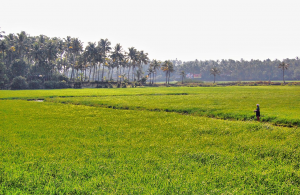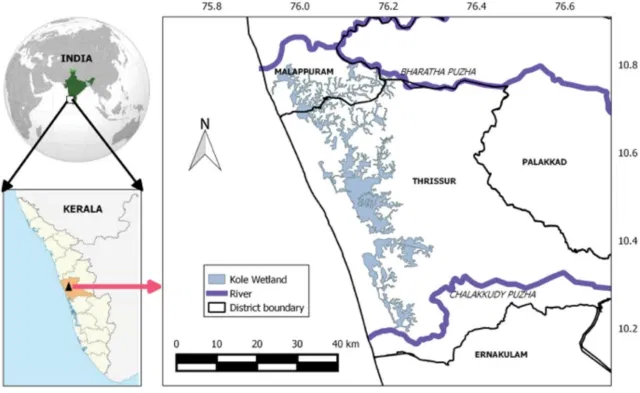44 species of odonates spotted in Kole fields
About Kol Wetlands


- Kole, is one of the largest brackish, humid tropical wetland ecosystems on the southwest coast of India.
- The Kole wetlands are spread over Thrissur and Malappuram districts of Kerala.
- It extends from the northern bank of Chalakudy river in the south to the southern bank of Bharathapuzha river in the north.
- Rice cultivation in Kole started as early as the 18th century by reclaiming the Trichur kayal lands (backwaters) by erecting temporary earthen bunds. The water pumped out from the field is stored in a network of canals in the area. Human involvement in the form of agriculture keeps the wetland alive.
- The Kole areas are low-lying and have a central, narrow strip covering a long expanse, with many pockets running into cultivated land on either side. The region is naturally subject to salt-water ingression.
- It is a RAMSAR SITE.
About odonates

- Odonata is an insect order which comprises the dragonflies and the damselflies.
- They feed on small insects and control pests in agricultural fields.
- They depend on freshwater to complete their life cycle, are excellent indicators of environmental health and can be used for monitoring pollution, habitat degradation and climate change
Why in the news?
- A new study has documented 44 species of odonates, belonging to 33 genera and eight families from the Kole wetlands.
- The study highlights the importance of the Kole field as an agro-ecosystem supporting other faunal groups in addition to birds.
- One-fourth (25.14%) of the total number of odonate species known to occur in Kerala was recorded from the Kole wetlands in the study.
References:
- https://india.mongabay.com/2021/02/septuagenarian-ensures-koles-wetland-status-remains-intact-through-farming/
- http://datazone.birdlife.org/site/factsheet/kole-wetland-iba-india
- https://en.wikipedia.org/wiki/Thrissur_Kole_Wetlands#/media/File:Koal_agriculture_kerala.jpg
- https://www.thehindu.com/news/national/kerala/44-species-of-odonates-spotted-in-kole-fields/article34199350.ece
Subscribe
Login
0 Comments
